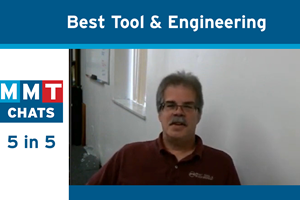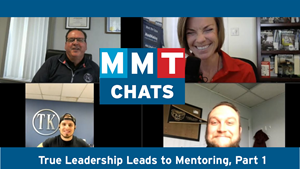Achieving Program Management Success
Effective communication is essential for maintaining good working relationships, keeping customers satisfied and achieving desirable outcomes.
Effective communication is essential for every aspect of a program manager’s job, especially when it comes to meeting customer needs and goals, understanding the audience and situation at hand, ensuring clarity at all levels, and following proper protocols. Try these recommended communication strategies:
Create targeted messages. Consider each specific group with which you are working within the customer’s operation, as skill sets vary among engineers, designers, tooling engineers, molders, materials specialists, schedulers and setup personnel. Each group has its own unique language or jargon that not only needs to be mastered, but also used in order to achieve desirable results. For example, for the part designer, the terms slide, lifter and core pull refer to the same mechanism, but to a moldmaker they represent different entities that are used in different ways. When a design is undercut, the moldmaker must use a slide, lifter or core pull, depending on where the action happens to be within the mold.
Also acknowledge the strengths and weaknesses of each person in the group so you can properly capitalize on and downplay the appropriate characteristics. Program managers need to look at each situation from the other individuals’ points of view and verify that everyone has what he or she needs.
Provide clarity in communication. This includes both written and verbal communication at all levels, at all times. This will help ensure everyone remains “on the same page.” Effective program managers should never assume anything and should make every attempt to clarify their written messages to make comprehension easier. Make expectations about deliverables clear and concise. The addition of pictures, illustrations and other types of visual aids will assist with this process. For example, a program manager who is working on an automotive program may use advanced product quality planning (APQP) as a guideline, because each element must be met to ensure a successful production part approval process (PPAP), or deliverable, to the customer and to achieve satisfactory finalization of the program.
Be assertive. Use an assertive rather than an aggressive approach for optimal results. For example, refrain from making unnecessary threats, going over people’s heads and attempting to negotiate prior to elevating the message. Pay attention to the tone of each written or verbal message. This will help to avoid inadvertently insulting or offending the listener in the process. For example, avoid using all caps (which amounts to shouting), or highlighting or bolding certain key words within an email message. Also avoid preparing and sending any form of written message when you are angry, as such “flaming” techniques will likely do more harm than good.
Answer “What’s in it for me?” up front. Understand that the people with whom you are communicating want to know the answer to this key question. It is up to the program manager to make the benefits of task completion as clear as possible to everyone in order to ensure an effective outcome. Devise a system of checks and balances to ensure that everything has been completed through the proper channels and adheres to the proper protocols of the individual markets you serve. Keep in mind that the aerospace, automotive and military markets each have different methods of checks and balances.
Programs are won or lost at the beginning, not the end, so those program managers who implement these crucial guidelines will be much more likely to maintain good working relationships with everyone, keep their customers satisfied and achieve desirable outcomes.
Related Content
MMT Chats: 5 in 5 with Best Tool and Engineering
MoldMaking Technology Editorial Director Christina Fuges reveals 5 best practices for improving efficiencies within shops...in 5 minutes. Our guest is Joe Cherluck, President of Best Tool and Engineering in Clinton Township, Michigan. This episode is brought to you by ISCAR.
Read MoreWomen Impacting Moldmaking
Honoring female makers, innovators and leaders who are influencing our industry's future.
Read MoreICYMI: MMT Chats: True Leadership Leads to Mentoring, Part 1
This trio from TK Mold and Engineering in Romeo, Michigan, joins me to discuss the role of leadership and culture in mentorship. This episode is brought to you by ISCAR with New Ideas for Machining Intelligently.
Read MoreThe Role of Social Media in Manufacturing
Charles Daniels CFO of Wepco Plastics shares insights on the role of social media in manufacturing, how to improve the “business” side of a small mold shop and continually developing culture.
Read MoreRead Next
Next-Generation Moldmakers
Developing the next-generation toolmaker is paramount to the survival, and even more to the prosperity, of moldmaking.
Read MoreSocial Media in Manufacturing
#DontBAHa8er. People use the Internet to find what they are looking for, and it is your responsibility to be seen and to remain relevant.
Read More









.jpg;maxWidth=300;quality=90)













